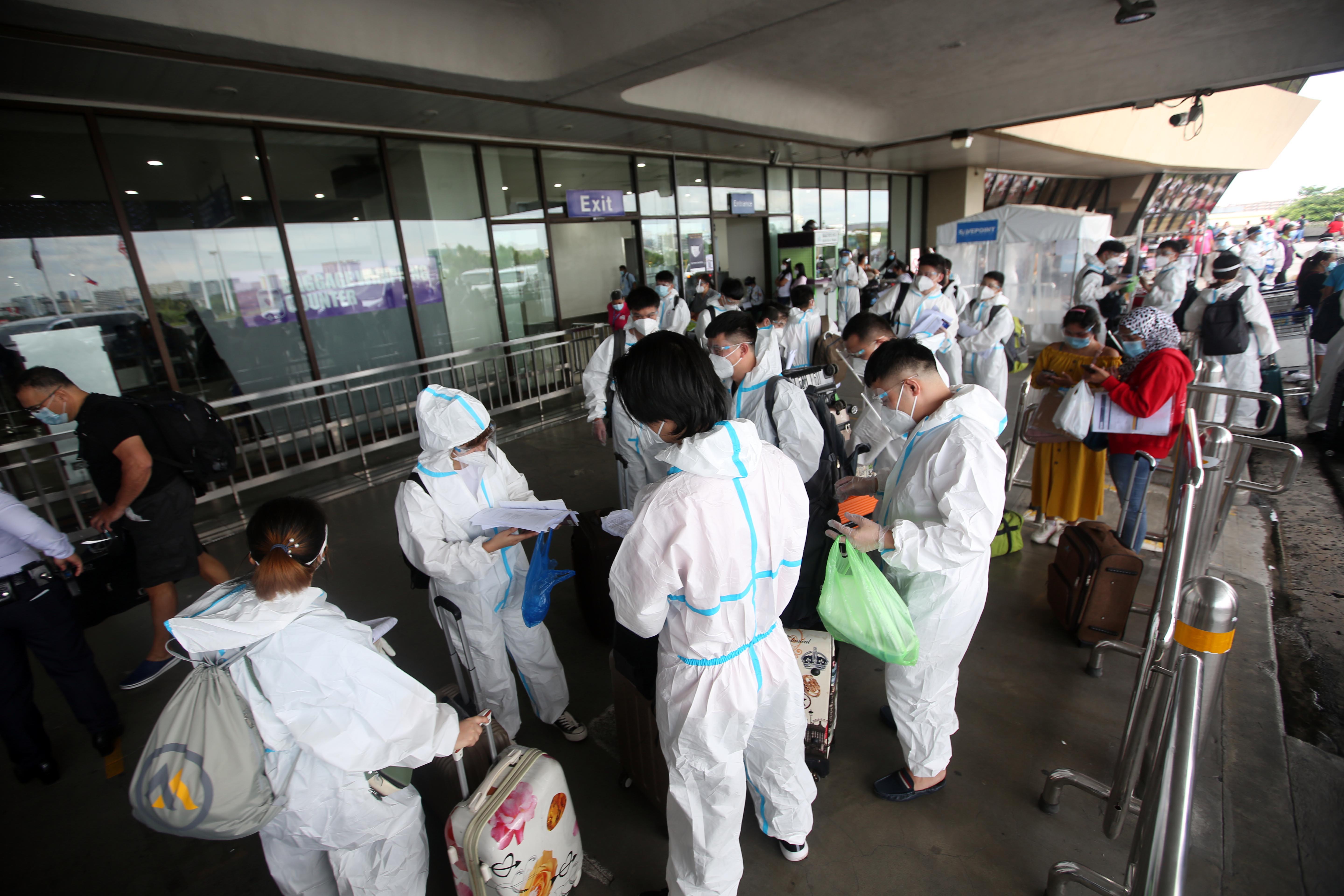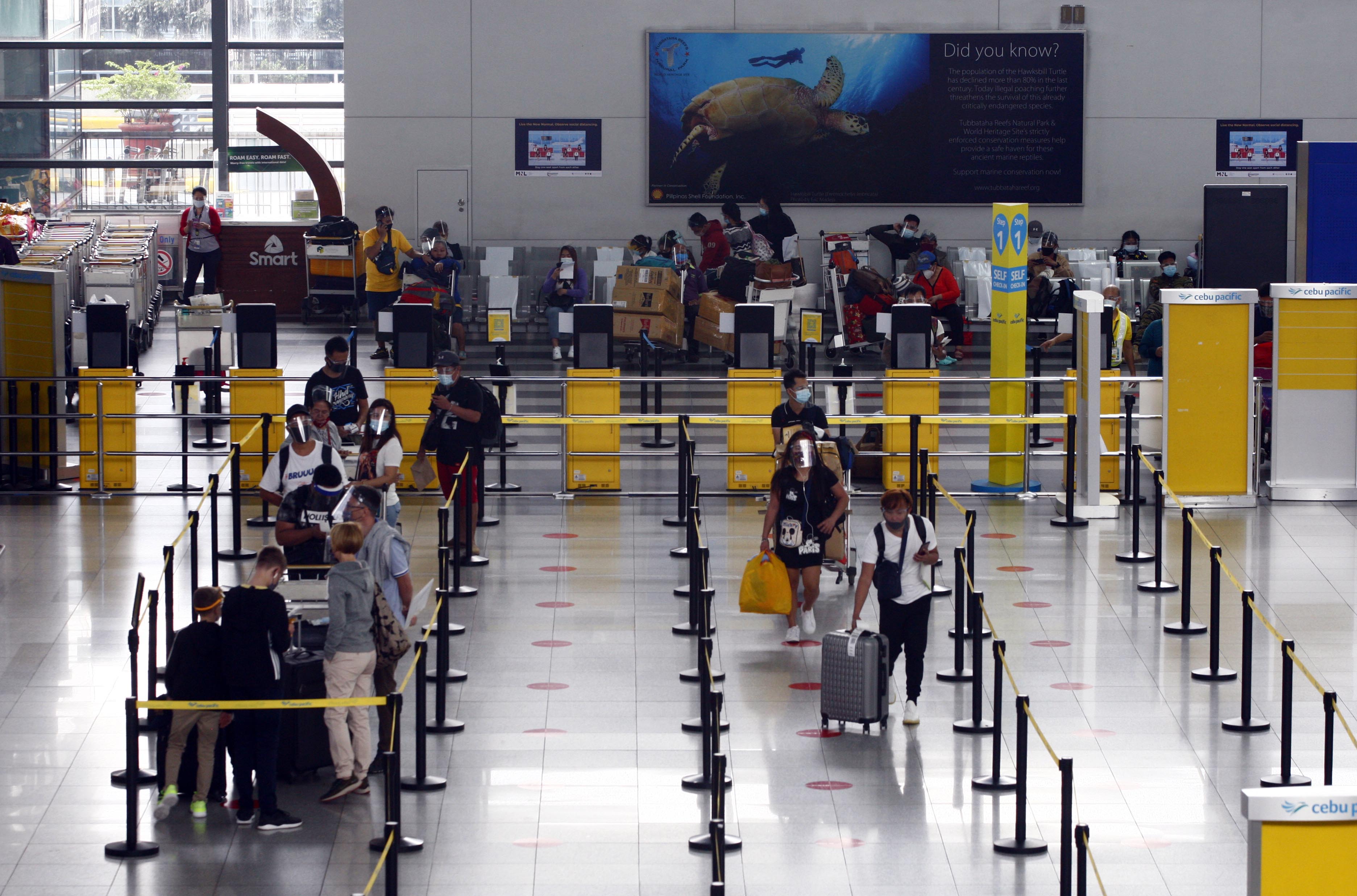Where in the world can Filipinos fly to during the pandemic?
Now that the ban on non-essential overseas travel for Filipinos has been lifted, where can Filipinos actually go overseas during the pandemic?
The Inter-Agency Task Force for the Management of Emerging Infectious Diseases said last week that Filipinos are now allowed to travel abroad, still subject to strict guidelines.
According to the Department of Foreign Affairs’ (DFA’s) infographics on travel bans and restrictions update dated Oct. 19, there are several countries where Filipinos are accepted (visa rules still apply) during the pandemic including Mexico, Andorra, Montenegro, Serbia and Zambia.
The United States, which tops the world’s number of COVID-19 cases at more than 8 million to date, also allows Filipinos to enter the country but is subject to flight availability and other special arrangements. Its visa rules still apply.

Countries across Europe are still mostly closed to travelers outside the continent due to a recent resurgence of COVID-19 cases.
Filipinos may enter in Southeast Asian neighbors Cambodia, Laos, Singapore and Timor-Leste, still subject to the destination’s medical protocols on arriving and departing passengers. Entry to these countries is also subject to approval from authorities/host government/destination’s visa regulations at this time.
Because of the ever-changing nature of the rules of travel during these uncertain times, the DFA advised the public to “always check ahead of travel dates with their airlines, as well as with relevant embassies or consulates before booking a ticket and before departure.”
Presidential Spokesperson Harry Roque said in a statement on Oct. 16 that Filipinos traveling abroad must submit the following: confirmed round-trip tickets; travel and health insurance for those traveling on tourist visas to cover travel disruptions and hospitalization in case of COVID-19 infections during their allowable period of stay abroad; and a negative antigen test result taken within 24 hours before departure.
It is also mandated to submit an immigration declaration acknowledging the risks involved in traveling. The immigration forms will reportedly be provided at airlines’ check-in counters.
Outbound Filipino travelers must also follow the existing guidelines of the National Task Force for returning overseas Filipinos that include checking in a designated quarantine facility while waiting for a negative swab test result.
Earlier today, the Bureau of Immigration (BI) said in a statement that tourist departures remain low despite lifted restrictions for non-essential outbound travel. The statement came a day after the non-essential overseas travel ban has been lifted.
According to BI data, as of early evening yesterday, only 95 Filipinos left under a tourist visa, out of the total 1,172 Filipinos who departed.

As the number of travelers remains low, Immigration Commissioner Jaime Morente said, “It could mean that Filipinos still feel hesitant to travel internationally during the pandemic.” He added that BI is expecting the numbers to pick up during the holiday season.
Morente also stated that arrival restrictions remain in place. "We are monitoring any policy change set by the IATF and the Office of the President, and we are ready to implement these as they may deem fit," he said.
At present, only Filipinos, their spouse and minor children holding tourist visas are allowed to enter the country. The restrictions also allow the following to enter the country: foreign children with special needs of Filipinos, foreign parent of minor Filipinos, and foreign parent of Filipino children with special needs.
Those who are eligible to enter are required to secure an entry visa from Philippine embassies or consulates prior to their arrival.
Foreign government and international organization officials and their dependents, foreign airline crewmembers, foreign seafarers with 9(c) visas, and foreigners with long-term visas are also allowed.
Apart from the above categories, accredited foreign government and international organization officials and their dependents, foreign airline crewmembers, foreign seafarers with 9(c) visas, and foreigners with long-term visas are also allowed to enter the country.
Banner image by Gustavo Fring from Pexels


